Home Blog Presentation Ideas How to Create and Deliver a Research Presentation

How to Create and Deliver a Research Presentation

Every research endeavor ends up with the communication of its findings. Graduate-level research culminates in a thesis defense , while many academic and scientific disciplines are published in peer-reviewed journals. In a business context, PowerPoint research presentation is the default format for reporting the findings to stakeholders.
Condensing months of work into a few slides can prove to be challenging. It requires particular skills to create and deliver a research presentation that promotes informed decisions and drives long-term projects forward.
Table of Contents
What is a Research Presentation
Key slides for creating a research presentation, tips when delivering a research presentation, how to present sources in a research presentation, recommended templates to create a research presentation.
A research presentation is the communication of research findings, typically delivered to an audience of peers, colleagues, students, or professionals. In the academe, it is meant to showcase the importance of the research paper , state the findings and the analysis of those findings, and seek feedback that could further the research.
The presentation of research becomes even more critical in the business world as the insights derived from it are the basis of strategic decisions of organizations. Information from this type of report can aid companies in maximizing the sales and profit of their business. Major projects such as research and development (R&D) in a new field, the launch of a new product or service, or even corporate social responsibility (CSR) initiatives will require the presentation of research findings to prove their feasibility.
Market research and technical research are examples of business-type research presentations you will commonly encounter.
In this article, we’ve compiled all the essential tips, including some examples and templates, to get you started with creating and delivering a stellar research presentation tailored specifically for the business context.
Various research suggests that the average attention span of adults during presentations is around 20 minutes, with a notable drop in an engagement at the 10-minute mark . Beyond that, you might see your audience doing other things.
How can you avoid such a mistake? The answer lies in the adage “keep it simple, stupid” or KISS. We don’t mean dumbing down your content but rather presenting it in a way that is easily digestible and accessible to your audience. One way you can do this is by organizing your research presentation using a clear structure.
Here are the slides you should prioritize when creating your research presentation PowerPoint.
1. Title Page
The title page is the first thing your audience will see during your presentation, so put extra effort into it to make an impression. Of course, writing presentation titles and title pages will vary depending on the type of presentation you are to deliver. In the case of a research presentation, you want a formal and academic-sounding one. It should include:
- The full title of the report
- The date of the report
- The name of the researchers or department in charge of the report
- The name of the organization for which the presentation is intended
When writing the title of your research presentation, it should reflect the topic and objective of the report. Focus only on the subject and avoid adding redundant phrases like “A research on” or “A study on.” However, you may use phrases like “Market Analysis” or “Feasibility Study” because they help identify the purpose of the presentation. Doing so also serves a long-term purpose for the filing and later retrieving of the document.
Here’s a sample title page for a hypothetical market research presentation from Gillette .

2. Executive Summary Slide
The executive summary marks the beginning of the body of the presentation, briefly summarizing the key discussion points of the research. Specifically, the summary may state the following:
- The purpose of the investigation and its significance within the organization’s goals
- The methods used for the investigation
- The major findings of the investigation
- The conclusions and recommendations after the investigation
Although the executive summary encompasses the entry of the research presentation, it should not dive into all the details of the work on which the findings, conclusions, and recommendations were based. Creating the executive summary requires a focus on clarity and brevity, especially when translating it to a PowerPoint document where space is limited.
Each point should be presented in a clear and visually engaging manner to capture the audience’s attention and set the stage for the rest of the presentation. Use visuals, bullet points, and minimal text to convey information efficiently.
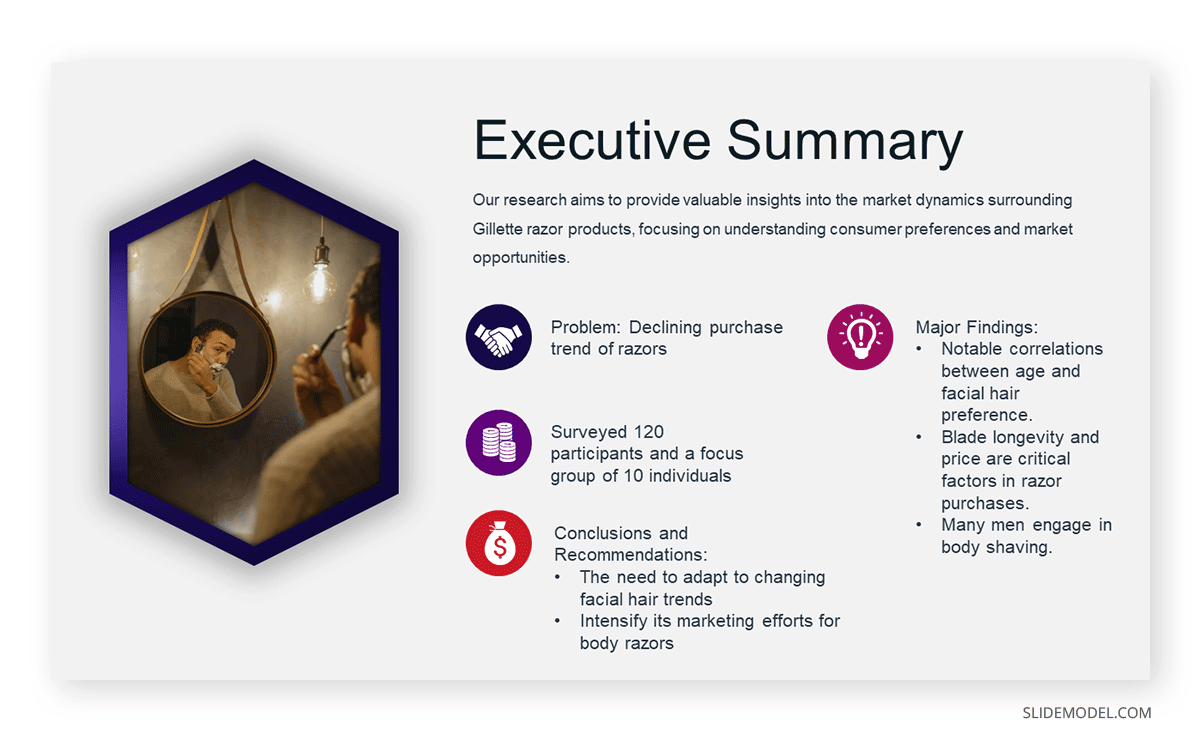
3. Introduction/ Project Description Slides
In this section, your goal is to provide your audience with the information that will help them understand the details of the presentation. Provide a detailed description of the project, including its goals, objectives, scope, and methods for gathering and analyzing data.
You want to answer these fundamental questions:
- What specific questions are you trying to answer, problems you aim to solve, or opportunities you seek to explore?
- Why is this project important, and what prompted it?
- What are the boundaries of your research or initiative?
- How were the data gathered?
Important: The introduction should exclude specific findings, conclusions, and recommendations.
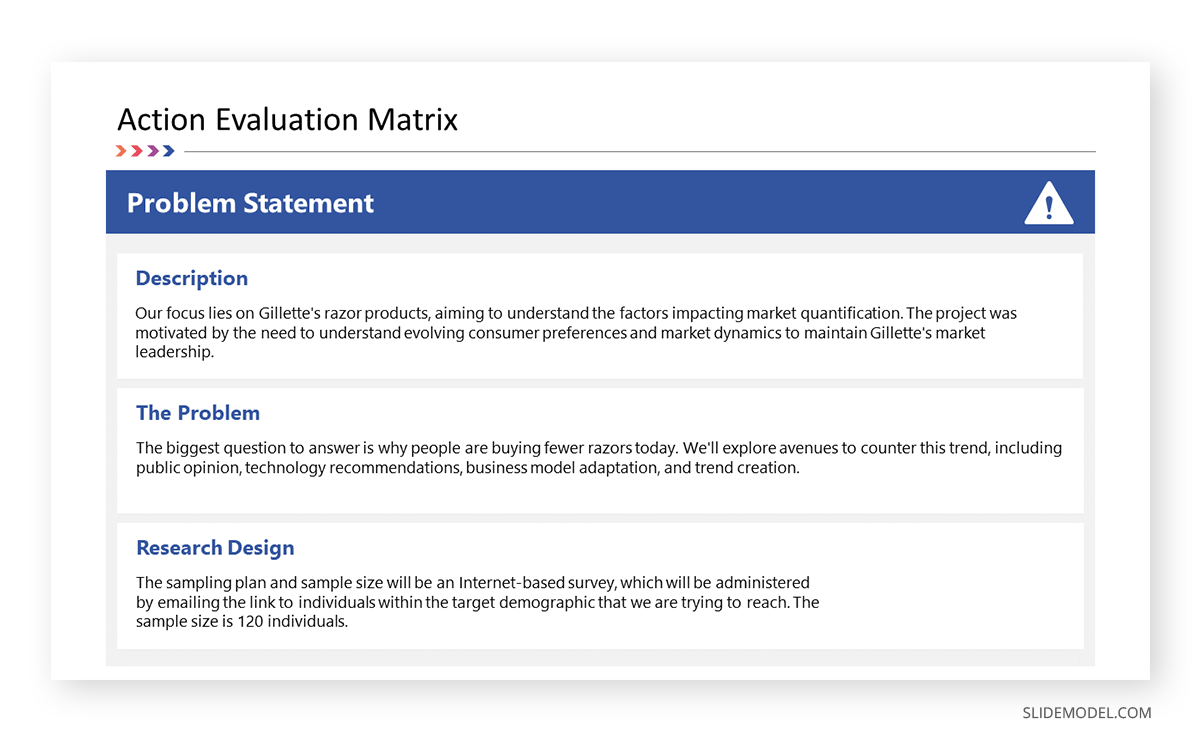
4. Data Presentation and Analyses Slides
This is the longest section of a research presentation, as you’ll present the data you’ve gathered and provide a thorough analysis of that data to draw meaningful conclusions. The format and components of this section can vary widely, tailored to the specific nature of your research.
For example, if you are doing market research, you may include the market potential estimate, competitor analysis, and pricing analysis. These elements will help your organization determine the actual viability of a market opportunity.
Visual aids like charts, graphs, tables, and diagrams are potent tools to convey your key findings effectively. These materials may be numbered and sequenced (Figure 1, Figure 2, and so forth), accompanied by text to make sense of the insights.
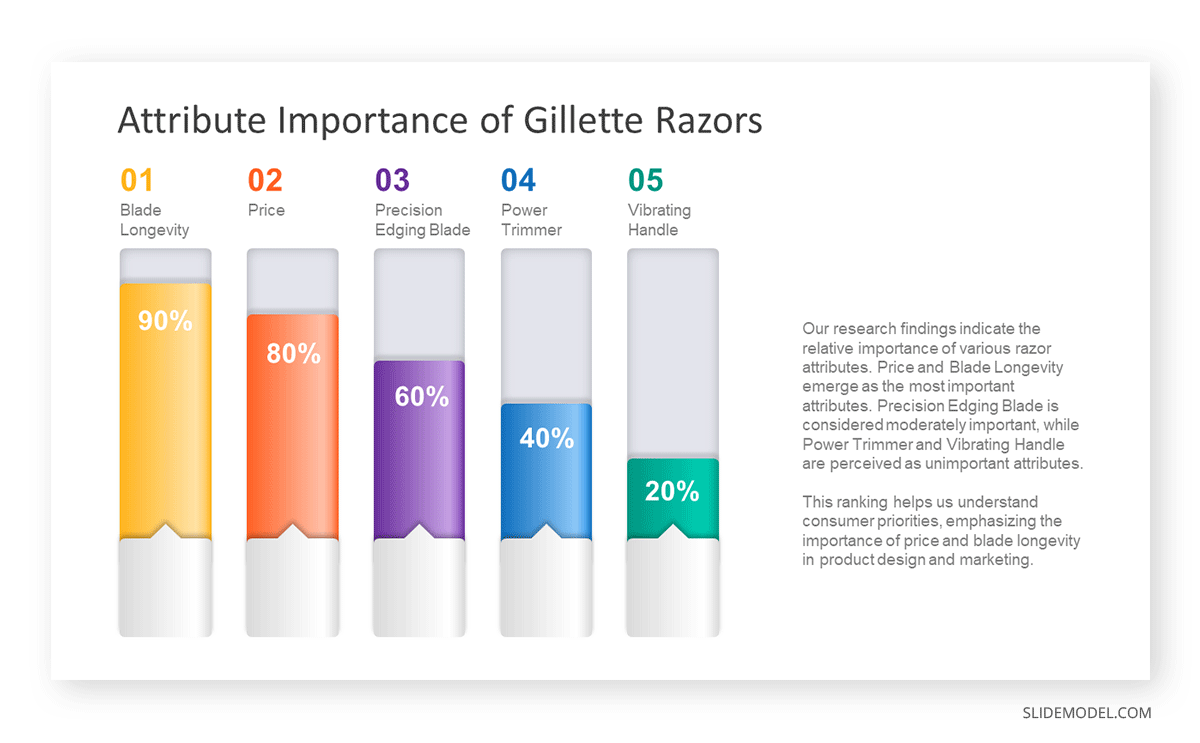
5. Conclusions
The conclusion of a research presentation is where you pull together the ideas derived from your data presentation and analyses in light of the purpose of the research. For example, if the objective is to assess the market of a new product, the conclusion should determine the requirements of the market in question and tell whether there is a product-market fit.
Designing your conclusion slide should be straightforward and focused on conveying the key takeaways from your research. Keep the text concise and to the point. Present it in bullet points or numbered lists to make the content easily scannable.
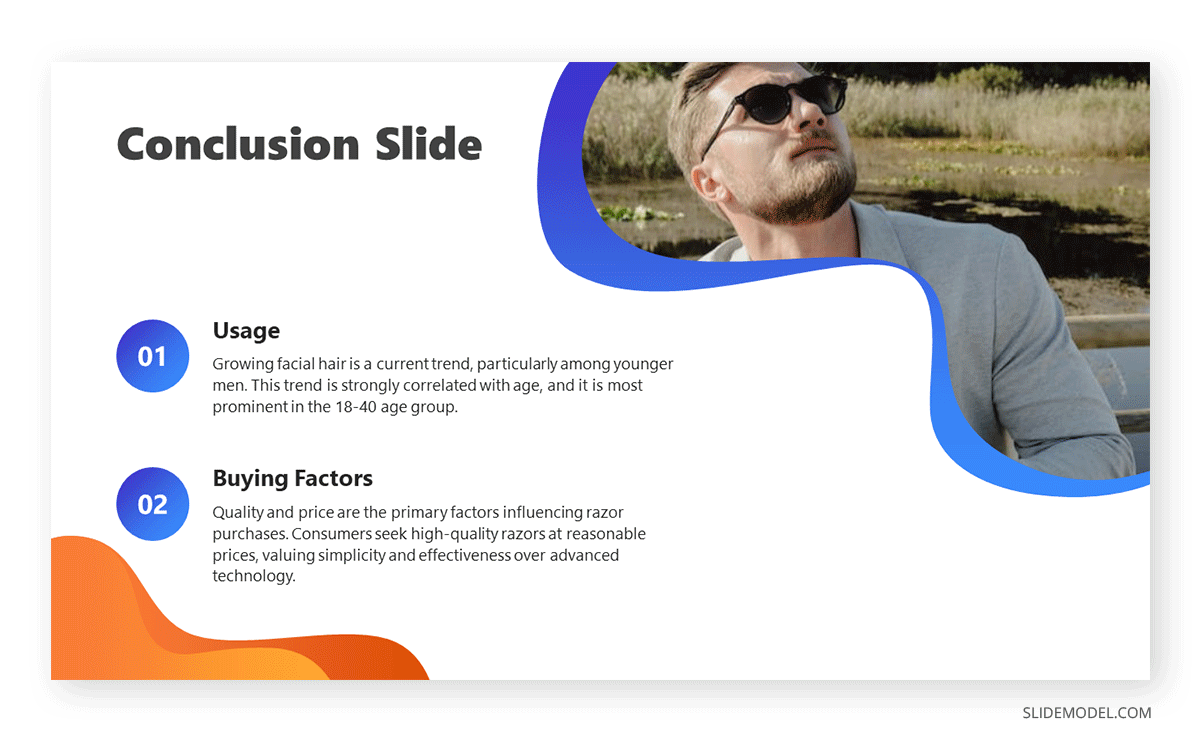
6. Recommendations
The findings of your research might reveal elements that may not align with your initial vision or expectations. These deviations are addressed in the recommendations section of your presentation, which outlines the best course of action based on the result of the research.
What emerging markets should we target next? Do we need to rethink our pricing strategies? Which professionals should we hire for this special project? — these are some of the questions that may arise when coming up with this part of the research.
Recommendations may be combined with the conclusion, but presenting them separately to reinforce their urgency. In the end, the decision-makers in the organization or your clients will make the final call on whether to accept or decline the recommendations.
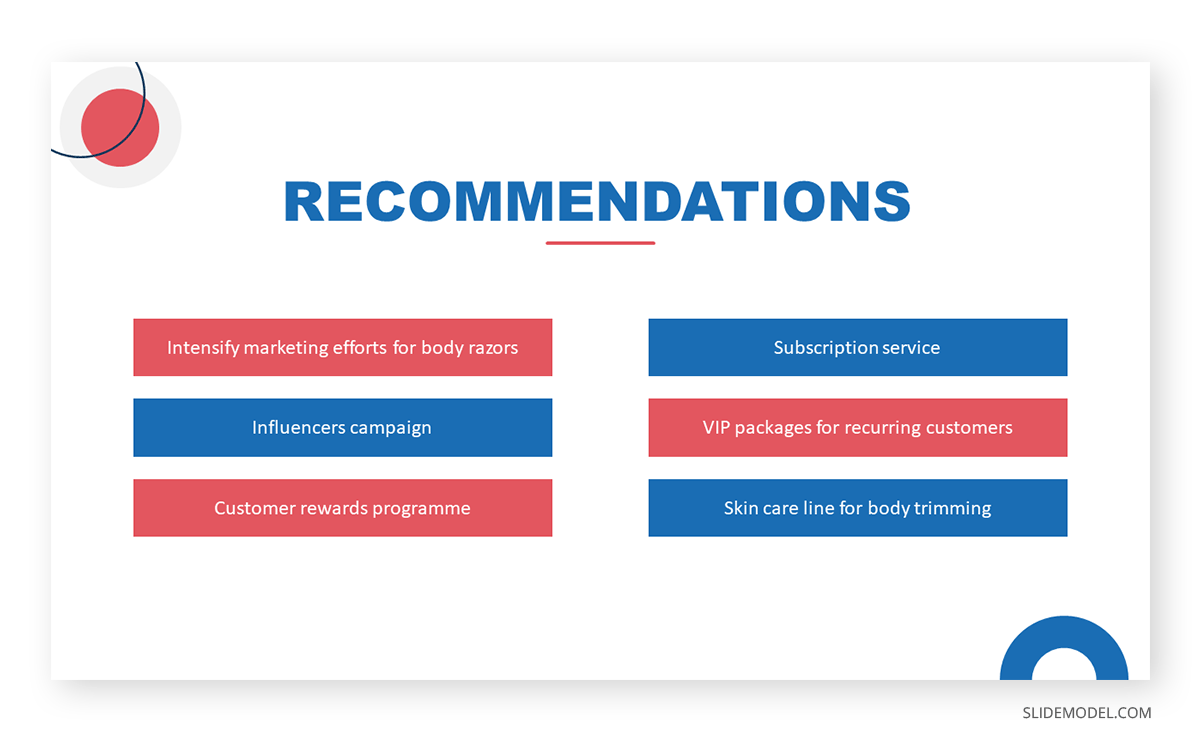
7. Questions Slide
Members of your audience are not involved in carrying out your research activity, which means there’s a lot they don’t know about its details. By offering an opportunity for questions, you can invite them to bridge that gap, seek clarification, and engage in a dialogue that enhances their understanding.
If your research is more business-oriented, facilitating a question and answer after your presentation becomes imperative as it’s your final appeal to encourage buy-in for your recommendations.
A simple “Ask us anything” slide can indicate that you are ready to accept questions.
If you need a quick method to create a research presentation, check out our AI presentation maker . A tool in which you add the topic, curate the outline, select a design, and let AI do the work for you. Alternatively, check our tutorial on how to convert a research paper to presentation using AI .
1. Focus on the Most Important Findings
The truth about presenting research findings is that your audience doesn’t need to know everything. Instead, they should receive a distilled, clear, and meaningful overview that focuses on the most critical aspects.
You will likely have to squeeze in the oral presentation of your research into a 10 to 20-minute presentation, so you have to make the most out of the time given to you. In the presentation, don’t soak in the less important elements like historical backgrounds. Decision-makers might even ask you to skip these portions and focus on sharing the findings.
2. Do Not Read Word-per-word
Reading word-for-word from your presentation slides intensifies the danger of losing your audience’s interest. Its effect can be detrimental, especially if the purpose of your research presentation is to gain approval from the audience. So, how can you avoid this mistake?
- Make a conscious design decision to keep the text on your slides minimal. Your slides should serve as visual cues to guide your presentation.
- Structure your presentation as a narrative or story. Stories are more engaging and memorable than dry, factual information.
- Prepare speaker notes with the key points of your research. Glance at it when needed.
- Engage with the audience by maintaining eye contact and asking rhetorical questions.
3. Don’t Go Without Handouts
Handouts are paper copies of your presentation slides that you distribute to your audience. They typically contain the summary of your key points, but they may also provide supplementary information supporting data presented through tables and graphs.
The purpose of distributing presentation handouts is to easily retain the key points you presented as they become good references in the future. Distributing handouts in advance allows your audience to review the material and come prepared with questions or points for discussion during the presentation. Also, check our article about how to create handouts for a presentation .
4. Actively Listen
An equally important skill that a presenter must possess aside from speaking is the ability to listen. We are not just talking about listening to what the audience is saying but also considering their reactions and nonverbal cues. If you sense disinterest or confusion, you can adapt your approach on the fly to re-engage them.
For example, if some members of your audience are exchanging glances, they may be skeptical of the research findings you are presenting. This is the best time to reassure them of the validity of your data and provide a concise overview of how it came to be. You may also encourage them to seek clarification.
5. Be Confident
Anxiety can strike before a presentation – it’s a common reaction whenever someone has to speak in front of others. If you can’t eliminate your stress, try to manage it.
People hate public speaking not because they simply hate it. Most of the time, it arises from one’s belief in themselves. You don’t have to take our word for it. Take Maslow’s theory that says a threat to one’s self-esteem is a source of distress among an individual.
Now, how can you master this feeling? You’ve spent a lot of time on your research, so there is no question about your topic knowledge. Perhaps you just need to rehearse your research presentation. If you know what you will say and how to say it, you will gain confidence in presenting your work.
All sources you use in creating your research presentation should be given proper credit. The APA Style is the most widely used citation style in formal research.
In-text citation
Add references within the text of your presentation slide by giving the author’s last name, year of publication, and page number (if applicable) in parentheses after direct quotations or paraphrased materials. As in:
The alarming rate at which global temperatures rise directly impacts biodiversity (Smith, 2020, p. 27).
If the author’s name and year of publication are mentioned in the text, add only the page number in parentheses after the quotations or paraphrased materials. As in:
According to Smith (2020), the alarming rate at which global temperatures rise directly impacts biodiversity (p. 27).
Image citation
All images from the web, including photos, graphs, and tables, used in your slides should be credited using the format below.
Creator’s Last Name, First Name. “Title of Image.” Website Name, Day Mo. Year, URL. Accessed Day Mo. Year.
Work cited page
A work cited page or reference list should follow after the last slide of your presentation. The list should be alphabetized by the author’s last name and initials followed by the year of publication, the title of the book or article, the place of publication, and the publisher. As in:
Smith, J. A. (2020). Climate Change and Biodiversity: A Comprehensive Study. New York, NY: ABC Publications.
When citing a document from a website, add the source URL after the title of the book or article instead of the place of publication and the publisher. As in:
Smith, J. A. (2020). Climate Change and Biodiversity: A Comprehensive Study. Retrieved from https://www.smith.com/climate-change-and-biodiversity.
1. Research Project Presentation PowerPoint Template
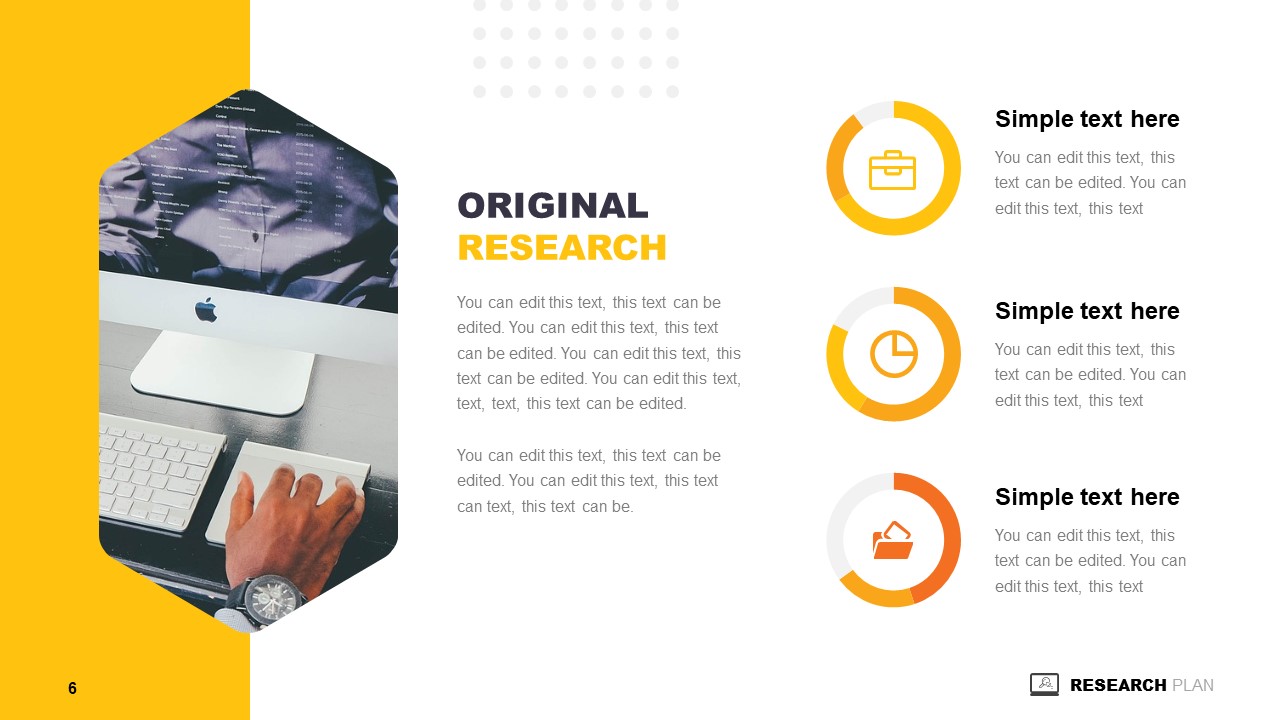
A slide deck containing 18 different slides intended to take off the weight of how to make a research presentation. With tons of visual aids, presenters can reference existing research on similar projects to this one – or link another research presentation example – provide an accurate data analysis, disclose the methodology used, and much more.
Use This Template
2. Research Presentation Scientific Method Diagram PowerPoint Template
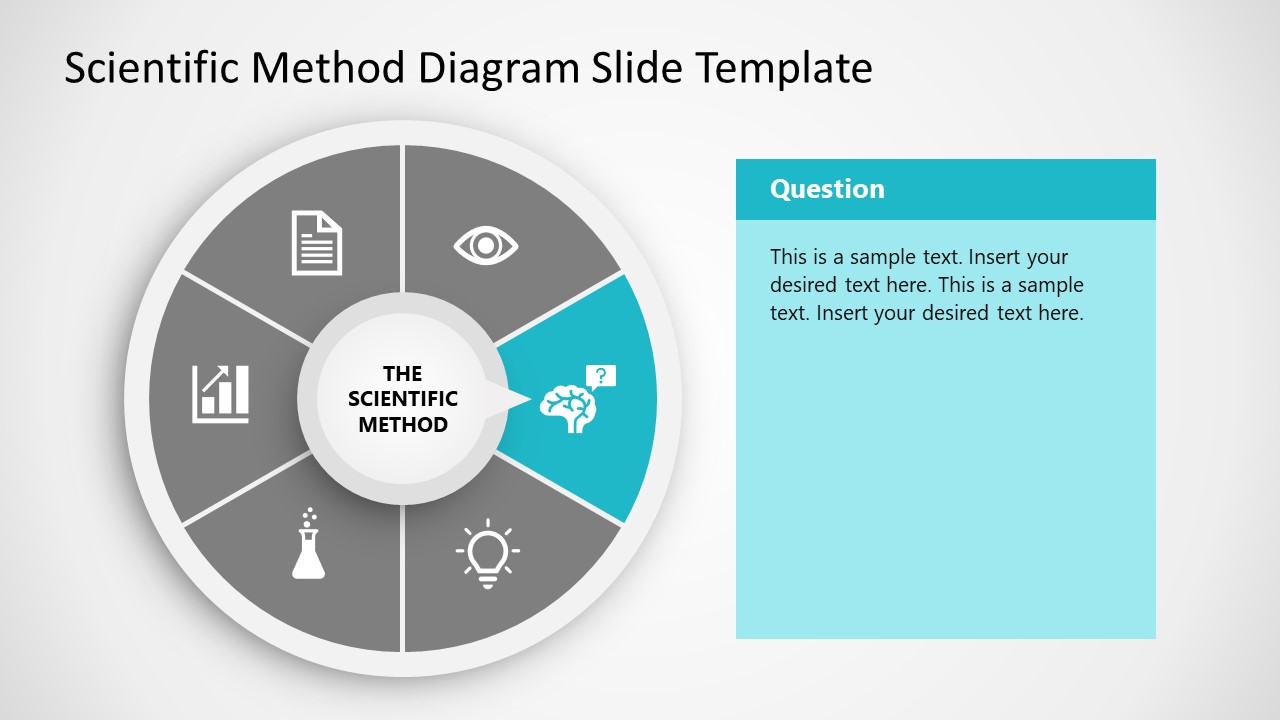
Whenever you intend to raise questions, expose the methodology you used for your research, or even suggest a scientific method approach for future analysis, this circular wheel diagram is a perfect fit for any presentation study.
Customize all of its elements to suit the demands of your presentation in just minutes.
3. Thesis Research Presentation PowerPoint Template
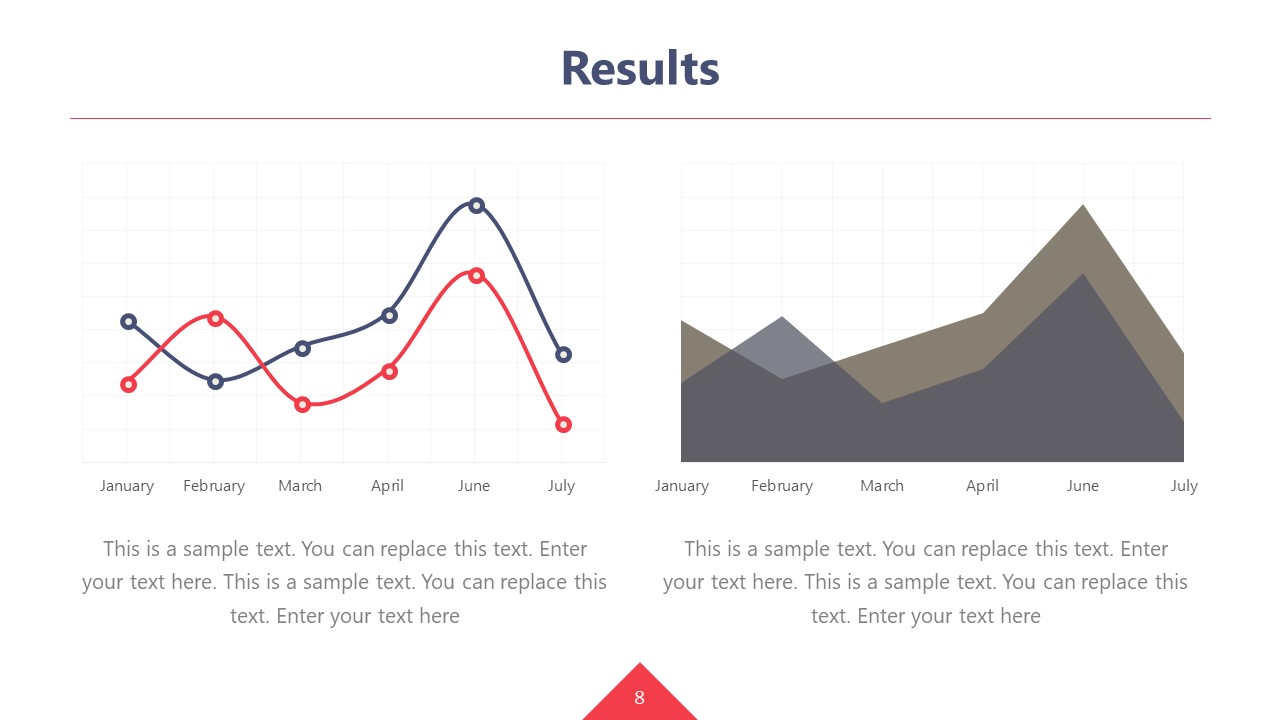
If your research presentation project belongs to academia, then this is the slide deck to pair that presentation. With a formal aesthetic and minimalistic style, this research presentation template focuses only on exposing your information as clearly as possible.
Use its included bar charts and graphs to introduce data, change the background of each slide to suit the topic of your presentation, and customize each of its elements to meet the requirements of your project with ease.
4. Animated Research Cards PowerPoint Template
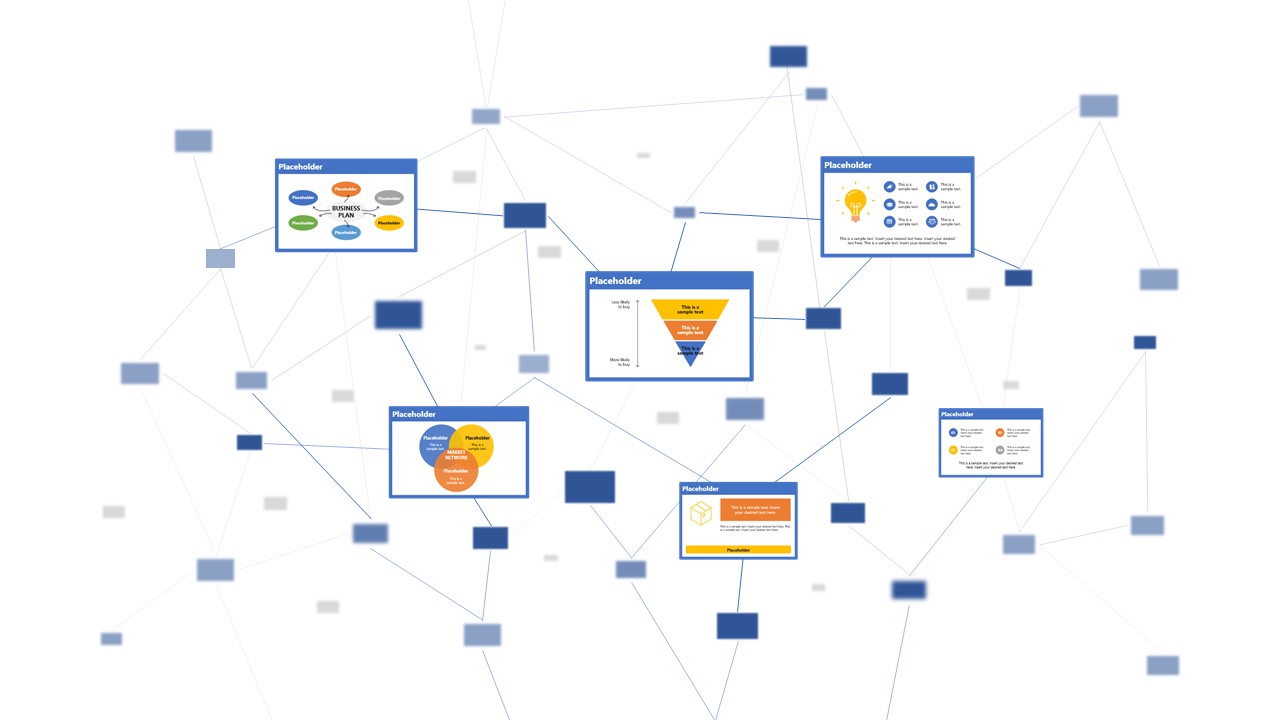
Visualize ideas and their connection points with the help of this research card template for PowerPoint. This slide deck, for example, can help speakers talk about alternative concepts to what they are currently managing and its possible outcomes, among different other usages this versatile PPT template has. Zoom Animation effects make a smooth transition between cards (or ideas).
5. Research Presentation Slide Deck for PowerPoint
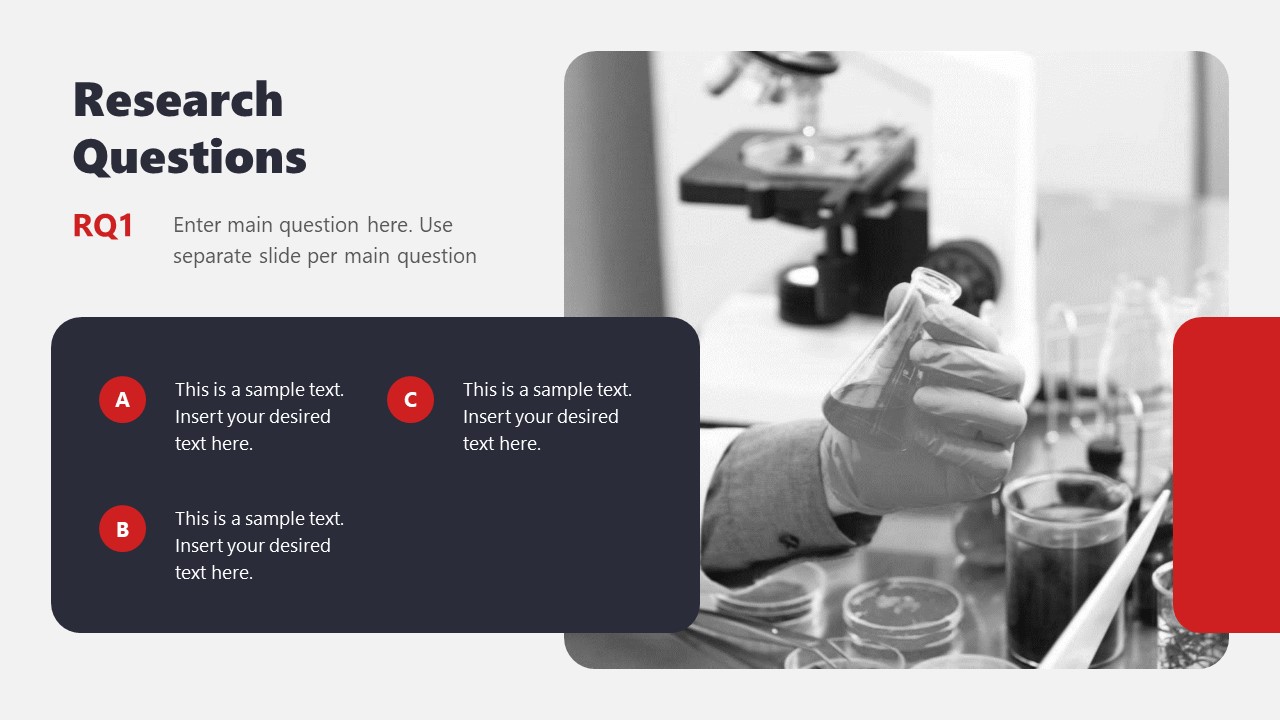
With a distinctive professional style, this research presentation PPT template helps business professionals and academics alike to introduce the findings of their work to team members or investors.
By accessing this template, you get the following slides:
- Introduction
- Problem Statement
- Research Questions
- Conceptual Research Framework (Concepts, Theories, Actors, & Constructs)
- Study design and methods
- Population & Sampling
- Data Collection
- Data Analysis
Check it out today and craft a powerful research presentation out of it!
A successful research presentation in business is not just about presenting data; it’s about persuasion to take meaningful action. It’s the bridge that connects your research efforts to the strategic initiatives of your organization. To embark on this journey successfully, planning your presentation thoroughly is paramount, from designing your PowerPoint to the delivery.
Take a look and get inspiration from the sample research presentation slides above, put our tips to heart, and transform your research findings into a compelling call to action.
Like this article? Please share
Academics, Presentation Approaches, Research & Development Filed under Presentation Ideas
Related Articles
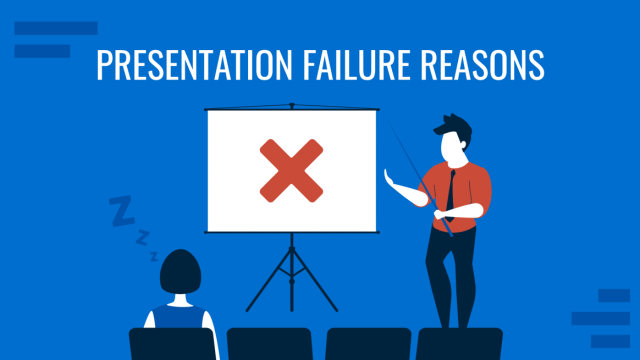
Filed under Presentation Ideas • October 31st, 2024
8 Top Reasons Your Presentation Isn’t Resonating and How to Fix It
Don’t feel frustrated about why your presentation isn’t performing as expected. Take a look at this guide to find the answers.
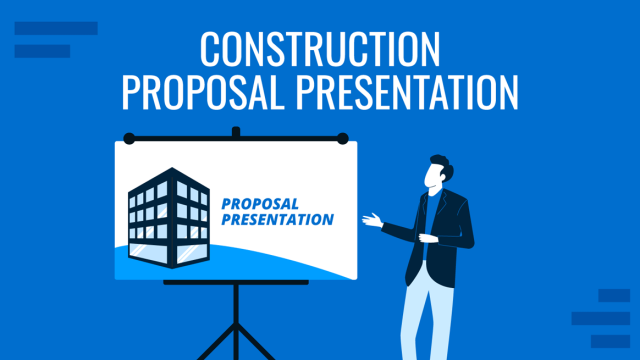
Filed under Business • October 31st, 2024
How to Create a Construction Proposal Presentation
Learn how to create winning construction proposal presentations with clear visuals, detailed information, and structured insights.

Filed under Presentation Ideas • October 23rd, 2024
Formal vs Informal Presentation: Understanding the Differences
Learn the differences between formal and informal presentations and how to transition smoothly. PPT templates and tips here!
Leave a Reply
Reference management. Clean and simple.
How to make a scientific presentation

Scientific presentation outlines
Questions to ask yourself before you write your talk, 1. how much time do you have, 2. who will you speak to, 3. what do you want the audience to learn from your talk, step 1: outline your presentation, step 2: plan your presentation slides, step 3: make the presentation slides, slide design, text elements, animations and transitions, step 4: practice your presentation, final thoughts, frequently asked questions about preparing scientific presentations, related articles.
A good scientific presentation achieves three things: you communicate the science clearly, your research leaves a lasting impression on your audience, and you enhance your reputation as a scientist.
But, what is the best way to prepare for a scientific presentation? How do you start writing a talk? What details do you include, and what do you leave out?
It’s tempting to launch into making lots of slides. But, starting with the slides can mean you neglect the narrative of your presentation, resulting in an overly detailed, boring talk.
The key to making an engaging scientific presentation is to prepare the narrative of your talk before beginning to construct your presentation slides. Planning your talk will ensure that you tell a clear, compelling scientific story that will engage the audience.
In this guide, you’ll find everything you need to know to make a good oral scientific presentation, including:
- The different types of oral scientific presentations and how they are delivered;
- How to outline a scientific presentation;
- How to make slides for a scientific presentation.
Our advice results from delving into the literature on writing scientific talks and from our own experiences as scientists in giving and listening to presentations. We provide tips and best practices for giving scientific talks in a separate post.
There are two main types of scientific talks:
- Your talk focuses on a single study . Typically, you tell the story of a single scientific paper. This format is common for short talks at contributed sessions in conferences.
- Your talk describes multiple studies. You tell the story of multiple scientific papers. It is crucial to have a theme that unites the studies, for example, an overarching question or problem statement, with each study representing specific but different variations of the same theme. Typically, PhD defenses, invited seminars, lectures, or talks for a prospective employer (i.e., “job talks”) fall into this category.
➡️ Learn how to prepare an excellent thesis defense
The length of time you are allotted for your talk will determine whether you will discuss a single study or multiple studies, and which details to include in your story.
The background and interests of your audience will determine the narrative direction of your talk, and what devices you will use to get their attention. Will you be speaking to people specializing in your field, or will the audience also contain people from disciplines other than your own? To reach non-specialists, you will need to discuss the broader implications of your study outside your field.
The needs of the audience will also determine what technical details you will include, and the language you will use. For example, an undergraduate audience will have different needs than an audience of seasoned academics. Students will require a more comprehensive overview of background information and explanations of jargon but will need less technical methodological details.
Your goal is to speak to the majority. But, make your talk accessible to the least knowledgeable person in the room.
This is called the thesis statement, or simply the “take-home message”. Having listened to your talk, what message do you want the audience to take away from your presentation? Describe the main idea in one or two sentences. You want this theme to be present throughout your presentation. Again, the thesis statement will depend on the audience and the type of talk you are giving.
Your thesis statement will drive the narrative for your talk. By deciding the take-home message you want to convince the audience of as a result of listening to your talk, you decide how the story of your talk will flow and how you will navigate its twists and turns. The thesis statement tells you the results you need to show, which subsequently tells you the methods or studies you need to describe, which decides the angle you take in your introduction.
➡️ Learn how to write a thesis statement
The goal of your talk is that the audience leaves afterward with a clear understanding of the key take-away message of your research. To achieve that goal, you need to tell a coherent, logical story that conveys your thesis statement throughout the presentation. You can tell your story through careful preparation of your talk.
Preparation of a scientific presentation involves three separate stages: outlining the scientific narrative, preparing slides, and practicing your delivery. Making the slides of your talk without first planning what you are going to say is inefficient.
Here, we provide a 4 step guide to writing your scientific presentation:
- Outline your presentation
- Plan your presentation slides
- Make the presentation slides
- Practice your presentation
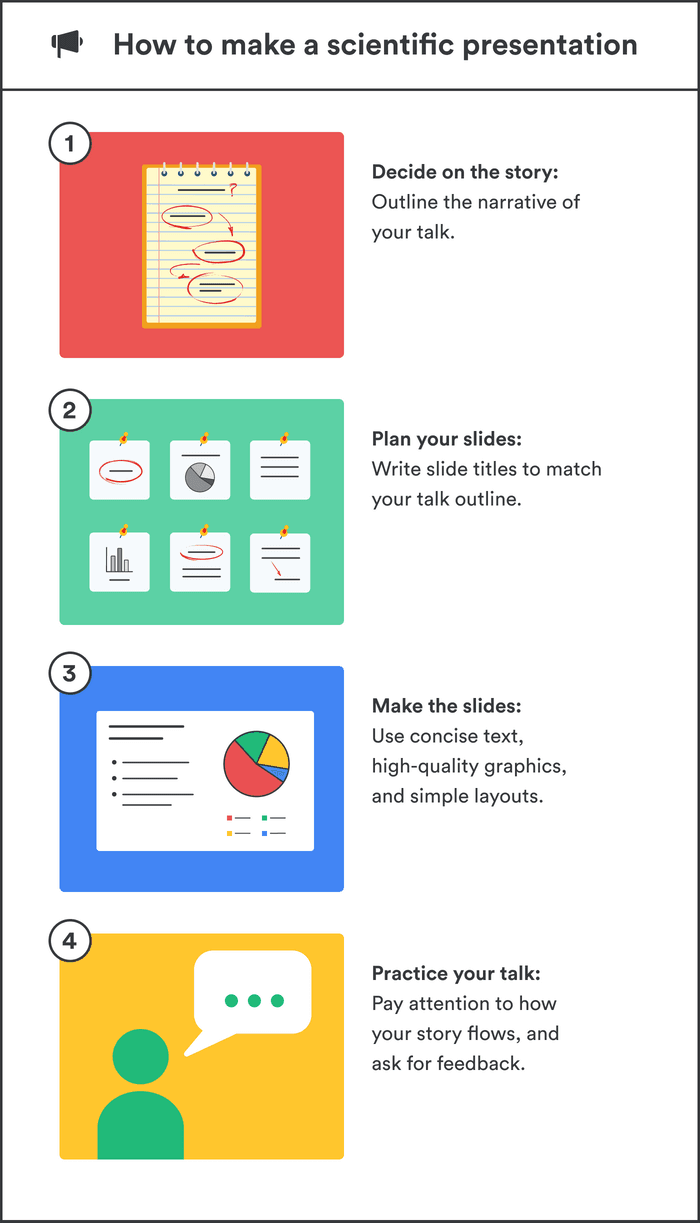
Writing an outline helps you consider the key pieces of your talk and how they fit together from the beginning, preventing you from forgetting any important details. It also means you avoid changing the order of your slides multiple times, saving you time.
Plan your talk as discrete sections. In the table below, we describe the sections for a single study talk vs. a talk discussing multiple studies:
The following tips apply when writing the outline of a single study talk. You can easily adapt this framework if you are writing a talk discussing multiple studies.
Introduction: Writing the introduction can be the hardest part of writing a talk. And when giving it, it’s the point where you might be at your most nervous. But preparing a good, concise introduction will settle your nerves.
The introduction tells the audience the story of why you studied your topic. A good introduction succinctly achieves four things, in the following order.
- It gives a broad perspective on the problem or topic for people in the audience who may be outside your discipline (i.e., it explains the big-picture problem motivating your study).
- It describes why you did the study, and why the audience should care.
- It gives a brief indication of how your study addressed the problem and provides the necessary background information that the audience needs to understand your work.
- It indicates what the audience will learn from the talk, and prepares them for what will come next.
A good introduction not only gives the big picture and motivations behind your study but also concisely sets the stage for what the audience will learn from the talk (e.g., the questions your work answers, and/or the hypotheses that your work tests). The end of the introduction will lead to a natural transition to the methods.
Give a broad perspective on the problem. The easiest way to start with the big picture is to think of a hook for the first slide of your presentation. A hook is an opening that gets the audience’s attention and gets them interested in your story. In science, this might take the form of a why, or a how question, or it could be a statement about a major problem or open question in your field. Other examples of hooks include quotes, short anecdotes, or interesting statistics.
Why should the audience care? Next, decide on the angle you are going to take on your hook that links to the thesis of your talk. In other words, you need to set the context, i.e., explain why the audience should care. For example, you may introduce an observation from nature, a pattern in experimental data, or a theory that you want to test. The audience must understand your motivations for the study.
Supplementary details. Once you have established the hook and angle, you need to include supplementary details to support them. For example, you might state your hypothesis. Then go into previous work and the current state of knowledge. Include citations of these studies. If you need to introduce some technical methodological details, theory, or jargon, do it here.
Conclude your introduction. The motivation for the work and background information should set the stage for the conclusion of the introduction, where you describe the goals of your study, and any hypotheses or predictions. Let the audience know what they are going to learn.
Methods: The audience will use your description of the methods to assess the approach you took in your study and to decide whether your findings are credible. Tell the story of your methods in chronological order. Use visuals to describe your methods as much as possible. If you have equations, make sure to take the time to explain them. Decide what methods to include and how you will show them. You need enough detail so that your audience will understand what you did and therefore can evaluate your approach, but avoid including superfluous details that do not support your main idea. You want to avoid the common mistake of including too much data, as the audience can read the paper(s) later.
Results: This is the evidence you present for your thesis. The audience will use the results to evaluate the support for your main idea. Choose the most important and interesting results—those that support your thesis. You don’t need to present all the results from your study (indeed, you most likely won’t have time to present them all). Break down complex results into digestible pieces, e.g., comparisons over multiple slides (more tips in the next section).
Summary: Summarize your main findings. Displaying your main findings through visuals can be effective. Emphasize the new contributions to scientific knowledge that your work makes.
Conclusion: Complete the circle by relating your conclusions to the big picture topic in your introduction—and your hook, if possible. It’s important to describe any alternative explanations for your findings. You might also speculate on future directions arising from your research. The slides that comprise your conclusion do not need to state “conclusion”. Rather, the concluding slide title should be a declarative sentence linking back to the big picture problem and your main idea.
It’s important to end well by planning a strong closure to your talk, after which you will thank the audience. Your closing statement should relate to your thesis, perhaps by stating it differently or memorably. Avoid ending awkwardly by memorizing your closing sentence.
By now, you have an outline of the story of your talk, which you can use to plan your slides. Your slides should complement and enhance what you will say. Use the following steps to prepare your slides.
- Write the slide titles to match your talk outline. These should be clear and informative declarative sentences that succinctly give the main idea of the slide (e.g., don’t use “Methods” as a slide title). Have one major idea per slide. In a YouTube talk on designing effective slides , researcher Michael Alley shows examples of instructive slide titles.
- Decide how you will convey the main idea of the slide (e.g., what figures, photographs, equations, statistics, references, or other elements you will need). The body of the slide should support the slide’s main idea.
- Under each slide title, outline what you want to say, in bullet points.
In sum, for each slide, prepare a title that summarizes its major idea, a list of visual elements, and a summary of the points you will make. Ensure each slide connects to your thesis. If it doesn’t, then you don’t need the slide.
Slides for scientific presentations have three major components: text (including labels and legends), graphics, and equations. Here, we give tips on how to present each of these components.
- Have an informative title slide. Include the names of all coauthors and their affiliations. Include an attractive image relating to your study.
- Make the foreground content of your slides “pop” by using an appropriate background. Slides that have white backgrounds with black text work well for small rooms, whereas slides with black backgrounds and white text are suitable for large rooms.
- The layout of your slides should be simple. Pay attention to how and where you lay the visual and text elements on each slide. It’s tempting to cram information, but you need lots of empty space. Retain space at the sides and bottom of your slides.
- Use sans serif fonts with a font size of at least 20 for text, and up to 40 for slide titles. Citations can be in 14 font and should be included at the bottom of the slide.
- Use bold or italics to emphasize words, not underlines or caps. Keep these effects to a minimum.
- Use concise text . You don’t need full sentences. Convey the essence of your message in as few words as possible. Write down what you’d like to say, and then shorten it for the slide. Remove unnecessary filler words.
- Text blocks should be limited to two lines. This will prevent you from crowding too much information on the slide.
- Include names of technical terms in your talk slides, especially if they are not familiar to everyone in the audience.
- Proofread your slides. Typos and grammatical errors are distracting for your audience.
- Include citations for the hypotheses or observations of other scientists.
- Good figures and graphics are essential to sustain audience interest. Use graphics and photographs to show the experiment or study system in action and to explain abstract concepts.
- Don’t use figures straight from your paper as they may be too detailed for your talk, and details like axes may be too small. Make new versions if necessary. Make them large enough to be visible from the back of the room.
- Use graphs to show your results, not tables. Tables are difficult for your audience to digest! If you must present a table, keep it simple.
- Label the axes of graphs and indicate the units. Label important components of graphics and photographs and include captions. Include sources for graphics that are not your own.
- Explain all the elements of a graph. This includes the axes, what the colors and markers mean, and patterns in the data.
- Use colors in figures and text in a meaningful, not random, way. For example, contrasting colors can be effective for pointing out comparisons and/or differences. Don’t use neon colors or pastels.
- Use thick lines in figures, and use color to create contrasts in the figures you present. Don’t use red/green or red/blue combinations, as color-blind audience members can’t distinguish between them.
- Arrows or circles can be effective for drawing attention to key details in graphs and equations. Add some text annotations along with them.
- Write your summary and conclusion slides using graphics, rather than showing a slide with a list of bullet points. Showing some of your results again can be helpful to remind the audience of your message.
- If your talk has equations, take time to explain them. Include text boxes to explain variables and mathematical terms, and put them under each term in the equation.
- Combine equations with a graphic that shows the scientific principle, or include a diagram of the mathematical model.
- Use animations judiciously. They are helpful to reveal complex ideas gradually, for example, if you need to make a comparison or contrast or to build a complicated argument or figure. For lists, reveal one bullet point at a time. New ideas appearing sequentially will help your audience follow your logic.
- Slide transitions should be simple. Silly ones distract from your message.
- Decide how you will make the transition as you move from one section of your talk to the next. For example, if you spend time talking through details, provide a summary afterward, especially in a long talk. Another common tactic is to have a “home slide” that you return to multiple times during the talk that reinforces your main idea or message. In her YouTube talk on designing effective scientific presentations , Stanford biologist Susan McConnell suggests using the approach of home slides to build a cohesive narrative.
To deliver a polished presentation, it is essential to practice it. Here are some tips.
- For your first run-through, practice alone. Pay attention to your narrative. Does your story flow naturally? Do you know how you will start and end? Are there any awkward transitions? Do animations help you tell your story? Do your slides help to convey what you are saying or are they missing components?
- Next, practice in front of your advisor, and/or your peers (e.g., your lab group). Ask someone to time your talk. Take note of their feedback and the questions that they ask you (you might be asked similar questions during your real talk).
- Edit your talk, taking into account the feedback you’ve received. Eliminate superfluous slides that don’t contribute to your takeaway message.
- Practice as many times as needed to memorize the order of your slides and the key transition points of your talk. However, don’t try to learn your talk word for word. Instead, memorize opening and closing statements, and sentences at key junctures in the presentation. Your presentation should resemble a serious but spontaneous conversation with the audience.
- Practicing multiple times also helps you hone the delivery of your talk. While rehearsing, pay attention to your vocal intonations and speed. Make sure to take pauses while you speak, and make eye contact with your imaginary audience.
- Make sure your talk finishes within the allotted time, and remember to leave time for questions. Conferences are particularly strict on run time.
- Anticipate questions and challenges from the audience, and clarify ambiguities within your slides and/or speech in response.
- If you anticipate that you could be asked questions about details but you don’t have time to include them, or they detract from the main message of your talk, you can prepare slides that address these questions and place them after the final slide of your talk.
➡️ More tips for giving scientific presentations
An organized presentation with a clear narrative will help you communicate your ideas effectively, which is essential for engaging your audience and conveying the importance of your work. Taking time to plan and outline your scientific presentation before writing the slides will help you manage your nerves and feel more confident during the presentation, which will improve your overall performance.
A good scientific presentation has an engaging scientific narrative with a memorable take-home message. It has clear, informative slides that enhance what the speaker says. You need to practice your talk many times to ensure you deliver a polished presentation.
First, consider who will attend your presentation, and what you want the audience to learn about your research. Tailor your content to their level of knowledge and interests. Second, create an outline for your presentation, including the key points you want to make and the evidence you will use to support those points. Finally, practice your presentation several times to ensure that it flows smoothly and that you are comfortable with the material.
Prepare an opening that immediately gets the audience’s attention. A common device is a why or a how question, or a statement of a major open problem in your field, but you could also start with a quote, interesting statistic, or case study from your field.
Scientific presentations typically either focus on a single study (e.g., a 15-minute conference presentation) or tell the story of multiple studies (e.g., a PhD defense or 50-minute conference keynote talk). For a single study talk, the structure follows the scientific paper format: Introduction, Methods, Results, Summary, and Conclusion, whereas the format of a talk discussing multiple studies is more complex, but a theme unifies the studies.
Ensure you have one major idea per slide, and convey that idea clearly (through images, equations, statistics, citations, video, etc.). The slide should include a title that summarizes the major point of the slide, should not contain too much text or too many graphics, and color should be used meaningfully.


Submit Manuscript
Easy Online Form
Get Newsletter
Sign Up Today
Research Presentation Strategies for Scientists and Academics
Home » Blog » Research Presentation Strategies for Scientists and Academics

Understanding Your Audience: Tailoring Your Research Presentation
You know the drill. You’ve got groundbreaking research, and you’re ready to share it with the world—or at least, with a room full of your peers. But here’s the catch: not all audiences are created equal, especially in the diverse world of science and academia. That’s where the magic of tailoring your research presentation to your audience comes in.
Picture this: you’re presenting to a group of seasoned experts in your field. They’re familiar with the jargon, the complex theories, and the nitty-gritty details of your work. Here, you can dive deep into the specifics without fear of losing your audience in a sea of scientific speak. But flip the script, and you’re addressing undergrads or a cross-disciplinary crowd. Suddenly, those same details can turn your presentation into an unintended snooze fest. It’s all about striking the right balance—simplifying without dumbing down, educating without overwhelming.
The Audience
Start by asking yourself: Who is my audience? What’s their background? What do they already know, and what will be new to them? This isn’t just about avoiding blank stares; it’s about making your research resonate. You want nods, not naps. You’re not just transferring information; you’re telling a story. And the best stories are those that the listener can connect with.
So, how do you make that connection? It’s not rocket science (unless, of course, your presentation is on rocket science). Speak their language. If you’re addressing fellow experts, go ahead, use that industry lingo. But for a general academic audience, keep it clear and concise. Use analogies, metaphors, and real-world examples that bring your research to life. Remember, at the heart of every successful research presentation is a story—a journey of discovery that you’re inviting your audience to join.
In the end, understanding your audience isn’t just a courtesy; it’s a strategy. A strategy that turns your research presentation from just another lecture into a memorable, engaging, and impactful experience.

The Structure of Success: Organizing Your Presentation Effectively
Alright, let’s talk structure. You’ve got a killer topic, you know your audience, but how do you lay out your presentation to keep your audience hooked from start to finish? It’s all in the structure. Think of your presentation like a blockbuster movie. It needs a solid beginning, a compelling middle, and a strong end.
The Beginning
First up, the beginning. Set the stage with a bang. Grab your audience’s attention with an intriguing fact, a challenging question, or a compelling story. This isn’t just about introducing your topic; it’s about making them sit up and think, “Hey, this is going to be interesting!” Then, give them a roadmap. Outline what you’ll cover, so they know what to expect. This isn’t just courteous; it primes their brains to follow along.
Now, for the meat of the matter—the middle. This is where you dive into your research, your findings, your analysis. But here’s the key: break it down. No one wants to be hit with a wall of data or a monologue of methodology. Segment your content into digestible chunks. Think of these as mini chapters, each with its own mini introduction, body, and conclusion. Use visuals, examples, and anecdotes to make your points clearer and more engaging. Remember, clarity is king.
Finally, the end. This is your moment to shine, to drive your points home. Summarize your key takeaways, but don’t just repeat what you’ve said. Synthesize it. Show them why it matters. And then, leave them with something to ponder—a thought, a challenge, a call to action. This is your chance to leave a lasting impression, to ensure that your presentation doesn’t just end with a round of polite claps but resonates long after you’ve left the podium.
Effective organization isn’t just about keeping your presentation neat; it’s about making it impactful. With a clear, engaging structure, you’re not just presenting research; you’re taking your audience on a journey they’ll remember.
Visual Aids: Enhancing Your Presentation with Effective Graphics
Let’s face it, even the most riveting research can fall flat if it’s presented in a lackluster way. Enter visual aids—your secret weapon in turning a good presentation into a great one. But beware, there’s an art to using visuals. It’s not about filling your slides with random graphs and images; it’s about enhancing your message and engaging your audience.
Graphs and Charts
First things first, let’s talk about graphs and charts. When you’re dealing with complex data, these can be lifesavers. But remember, simplicity is key. Your audience shouldn’t need a PhD to decipher your graphs. Use clear labels, limit the number of variables, and stick to formats that your audience is familiar with. Think bar graphs, line charts, pie charts—classics for a reason. And hey, if you can turn that data into an easy-to-understand infographic, even better!
Now, about those images. A picture is worth a thousand words, right? Well, in a presentation, the right picture can be worth even more. Use images to evoke emotions, to illustrate a point, or to give your audience a mental break. But keep them relevant and high-quality. No one’s impressed by pixelated pictures or clip art from the 90s.
Don’t forget about the layout of your slides. Clutter is the enemy of comprehension. Keep it clean, keep it simple. Use space to your advantage. A well-placed image or graph with plenty of white space around it can do wonders in drawing attention where you want it.
And let’s not overlook animations and transitions. Sure, they can add a bit of flair, but use them sparingly and purposefully. Your goal is to enhance your presentation, not to distract from it with an over-the-top light show.
In the end, visual aids are just that—aid. They’re there to support your presentation, not to overshadow it. Use them to clarify, to illustrate, to emphasize. Do it right, and you’ll not only convey your research more effectively, but you’ll also leave a visual imprint that keeps your work in the minds of your audience long after your presentation ends.
Storytelling in Science: Making Your Research Relatable
When it comes to research presentations, storytelling might not be the first thing that pops into your mind. But here’s the thing: science doesn’t have to be a string of facts and figures. By weaving your findings into a narrative, you can transform your presentation from a mere transfer of information into an engaging, memorable story.
So, how do you turn your research into a story? Start with the big picture. What’s the broader context of your work? Maybe it’s solving a long-standing mystery, advancing a critical field, or addressing a global challenge. Give your audience the “why” before the “what.” This sets the stage and shows them why they should care.
The Introduction
Next, introduce the characters. In scientific storytelling, your characters might be a team of researchers, a groundbreaking technology, or even a set of data points. Give them personality. Talk about the challenges they faced, the breakthroughs, the setbacks. This humanizes your research and makes it more relatable.
Now, build the plot. Walk your audience through the journey of your research—the hypothesis, the experiments, the results. But remember, a good story has twists and turns. Don’t shy away from discussing the unexpected findings or the dead ends. These add depth to your narrative and keep your audience engaged.
The Findings
And don’t forget the climax—the moment of discovery, the key findings, the implications of your work. This is what your story has been building towards. Make it count.
Finally, wrap it up with a conclusion that ties back to the big picture. Reiterate the impact of your research, but leave room for questions, for curiosity, for further exploration.
Remember, storytelling in science isn’t about fictionalizing your work. It’s about presenting it in a way that resonates with your audience. It’s about making the complex simple, the mundane fascinating, and the ordinary extraordinary. It’s about turning your presentation into a story that sticks.
Handling Q&A Sessions: Tips for Confident Responses
Ah, the Q&A session – that moment when your well-prepared presentation gives way to the unpredictability of audience queries. It can be daunting, but fear not! With the right approach, you can handle this session with as much finesse as your presentation itself.
Anticipate Questions
Firstly, anticipate questions. Before you even step onto that stage, think about potential queries your audience might have. What aspects of your research could raise eyebrows? What deserves more explanation? Having a mental (or even a written) list of possible questions and rehearsed answers can be a game-changer.
Next up, practice active listening. When someone asks a question, give them your full attention. This isn’t just about courtesy; it’s about understanding the question correctly so you can give a relevant answer. Plus, it gives you a moment to formulate your response.
Now, let’s talk about the responses. Stay calm and composed, even if the question is challenging or critical. Acknowledge the question, thank the person for asking, and then dive into your answer. If you don’t know the answer, it’s okay to admit it. Honesty in such situations is always appreciated. You can always offer to discuss it further post-presentation or suggest resources for further information.
The “Bridge”
Here’s a pro tip: use the “bridge” technique. If you get a question that’s off-topic or too complex to answer in the session, bridge it back to something you’ve covered in your presentation. For instance, “That’s an interesting question. While it’s beyond the scope of today’s talk, what I can tell you is…”
Lastly, keep your answers concise. The Q&A session is not the time for another presentation. Give clear, succinct answers. This not only shows respect for the questioner but also allows time for more questions from other audience members.
Remember, the Q&A session is not just a test of your knowledge, but an opportunity to engage with your audience, clarify doubts, and make your research more accessible. Handle it well, and you leave your audience not just informed, but impressed.
The Power of Practice: Preparing for a Smooth Delivery
We’ve all heard the saying, “Practice makes perfect,” and nowhere is this truer than in preparing for a research presentation. The key to delivering your presentation smoothly and confidently lies in thorough and thoughtful practice. But how do you practice effectively? Let’s break it down.
First up, start early. Don’t wait until the night before. Give yourself ample time to rehearse, refine, and even rework parts of your presentation if necessary. This also helps reduce those last-minute jitters.
Now, let’s talk about the how. Don’t just silently read through your slides. Stand up, speak out loud, and go through your presentation as if you’re in front of your audience. Pay attention to your pacing, your tone, and your body language. Are you rushing through it? Are you speaking clearly? Are you making eye contact (even if it’s just with a spot on the wall)? This is the time to iron out those kinks.
Record Yourself
Here’s a pro tip: record yourself. In today’s digital age, it’s easy to record your practice sessions on your phone or computer. Watching yourself can be enlightening (and yes, sometimes a bit cringe-worthy). It helps you notice things you might not be aware of when you’re in the thick of presenting—like those “umms” and “ahhs” or that nervous foot tapping.
Another vital part of practicing is getting feedback. Present to a friend, a colleague, or even your cat (hey, an audience is an audience). Ask for honest feedback on clarity, engagement, and overall delivery. What made sense? What didn’t? What captured their interest? Use this feedback to tweak and improve your presentation.
And remember, practice isn’t just about memorizing your script word for word. It’s about becoming comfortable with your material, familiar with your flow, and confident in your ability to convey your research effectively.
So, embrace the power of practice. By the time you step up to give your actual presentation, you’ll be ready to deliver it not just with accuracy, but with flair.
Navigating Common Pitfalls in Research Presentations
Even the most seasoned presenters can stumble into common traps when delivering research presentations. Being aware of these pitfalls is the first step to avoiding them. So, let’s highlight some typical issues and how to steer clear of them.
First up, the data dump. It’s tempting to showcase every bit of your hard work, but overwhelming your audience with too much data is a surefire way to lose their engagement. The key? Focus on your most significant findings. Highlight what’s truly important and leave the minutiae for the full research paper or follow-up discussions.
Then there’s the jargon jungle. Specialized terminology is part and parcel of scientific research, but an overuse of jargon can make your presentation inaccessible. Always consider your audience’s background and simplify language where possible. Remember, the goal is to communicate, not to impress with complex vocabulary.
Another common pitfall? The never-ending slide show. Slides are a fantastic visual aid, but too many can distract and disengage your audience. Stick to the essentials. Each slide should serve a clear purpose and add value to your presentation. And please, let’s avoid those text-heavy slides that are impossible to read!
Let’s not forget about monotone delivery. A flat, unvarying presentation style can turn even the most fascinating research into a snooze fest. Vary your tone, pace, and volume to keep things interesting. Use pauses for emphasis, and don’t be afraid to show your enthusiasm for the topic—it’s contagious!
Lastly, the lack of rehearsal, which we’ve touched on before, is a critical pitfall. Familiarity with your material and comfort with your delivery style come only with practice. Don’t skimp on it.
By being mindful of these common pitfalls and actively working to avoid them, you can ensure that your research presentation is not just heard, but also appreciated and remembered.
Engaging Your Audience: Interactive Elements in Presentations
Engaging your audience is not just about delivering information; it’s about creating an interactive experience. Adding interactive elements to your presentation can significantly boost audience engagement and make your research more memorable. So, how can you do this effectively?
Firstly, consider incorporating live polls or quizzes. This works especially well in a digital format or in larger venues equipped with interactive technology. It’s a fun and effective way to gauge audience understanding and opinions, and it adds a dynamic element to your presentation.
Another strategy is to encourage questions throughout your presentation, not just at the end. This creates a dialog rather than a monologue and keeps your audience actively involved. It also helps you clarify points on the fly and gauge audience comprehension in real time.
Storytelling
Interactive storytelling can also be powerful. Instead of just presenting the results, take your audience through the research process. Ask them what they would do at critical junctures or how they might interpret certain data. This not only makes your presentation more engaging but also helps the audience think more deeply about the subject.
Then, there’s the use of digital tools like augmented reality or interactive infographics, particularly effective for illustrating complex data or processes. These tools can turn abstract concepts into something tangible and understandable, thereby enhancing learning and retention.
Group discussions or breakout sessions, if the format of your presentation allows, can also be highly effective. Divide your audience into small groups to discuss a specific aspect of your research, and then reconvene to share insights. This not only breaks up the presentation but also encourages active participation.
Remember, the goal of adding interactive elements is to transform passive listeners into active participants. This not only makes your presentation more engaging but also reinforces the audience’s understanding and retention of your research.
Perfecting Your Pitch: Tone and Language Tips
When it comes to research presentations, the way you convey your message can be just as important as the content itself. Perfecting your pitch involves fine-tuning your tone and language to ensure your presentation is not only informative but also engaging and accessible. Let’s look at some key tips to achieve this.
First, let’s talk about tone. Your tone should match the nature of your research and the composition of your audience. For a more formal academic crowd, a serious and professional tone is appropriate. However, this doesn’t mean you can’t inject a bit of warmth or humor where suitable. For a mixed or less formal audience, a conversational tone can make your presentation more relatable. The key is to be authentic—don’t force a tone that doesn’t feel natural to you.
Now, onto language. Clarity and simplicity are your best friends, even when discussing complex topics. Avoid or explain jargon and technical terms. Remember, the goal is to communicate your research effectively, not to showcase your vocabulary. Use short, clear sentences and active voice to keep your audience engaged.
Storytelling, as previously discussed, is a fantastic tool. Use narrative elements to make your presentation more captivating. Share anecdotes, experiences, or hypothetical scenarios that illustrate your points and make your research come alive.
Pacing is another important aspect. Vary your speaking speed and pause strategically for emphasis or to allow key points to sink in. This helps maintain audience attention and enhances comprehension.
Body Language
Non-verbal communication also plays a crucial role. Your body language, facial expressions, and gestures should complement your words. Make eye contact to connect with your audience, use hand gestures for emphasis, and move around the stage or room if possible to maintain dynamism.
Finally, practice empathy. Put yourself in your audience’s shoes. What would you find engaging? What language would be clear to you? This perspective can guide you in crafting a pitch that resonates well with your listeners.
By fine-tuning your tone and language, you can transform your research presentation from a mere sharing of information into an impactful and memorable experience.
Utilizing Feedback: Improving Your Presentation Skills
Feedback is the breakfast of champions, especially when it comes to honing your presentation skills. Whether it’s from peers, mentors, or your audience, constructive feedback is invaluable for growth and improvement. Let’s explore how you can effectively utilize feedback to elevate your research presentations.
Firstly, actively seek feedback. Don’t wait for it to come to you. After your presentation, ask your audience, colleagues, or mentors for their thoughts. What did they like? What could be improved? Specific questions can yield more detailed and useful responses than a general request for feedback.
When receiving feedback, listen openly and resist the urge to defend your work. It’s natural to feel protective of your presentation, especially if you’ve invested a lot of time and effort into it. However, remember that feedback is not a personal attack but an opportunity to learn and grow.
Prioritize the feedback. You might receive a wide range of suggestions and critiques. Some will be immediately actionable, while others might require more time or resources to implement. Identify the changes that will have the most significant impact on your presentation skills and focus on those first.
Reflect on the feedback. Take some time to think about what you’ve heard. How does it align with your own perception of your presentation? Are there recurring themes in the feedback you’re receiving? This reflection can provide valuable insights into areas you may not have realized needed improvement.
Implementation
Implement changes based on the feedback. This might involve tweaking your slides, adjusting your speaking style, or practicing more. Remember, improvement is a continuous process, and each presentation is an opportunity to implement what you’ve learned.
Lastly, don’t be discouraged by negative feedback. Instead, view it as a stepping stone to becoming a better presenter. Embrace the learning process, and remember that even the most experienced speakers have room for improvement.
By actively seeking, listening to, and acting on feedback, you can continually refine your presentation skills. This not only enhances your current research presentation but also sets you up for success in future endeavors.
Latest Trends in Scientific Presentations
Staying ahead of the curve is crucial in the fast-evolving world of scientific research, and this extends to how you present your work. Embracing the latest trends in scientific presentations can not only enhance the impact of your message but also demonstrate your engagement with modern communication techniques. Let’s delve into some of these cutting-edge trends.
Digital and Interactive Media
First and foremost, there’s a growing emphasis on digital and interactive media. Think beyond static slides; incorporate videos, animations, and interactive elements into your presentation. These tools can bring complex data to life, making it easier for your audience to grasp and retain information.
Virtual and augmented reality (VR and AR) are starting to make their mark in scientific presentations. Imagine immersing your audience in a 3D environment where they can interact with your research data or explore a virtual model of your study subject. While still emerging, these technologies offer exciting possibilities for engagement and comprehension.
Data visualization is becoming increasingly sophisticated. Today, it’s about more than pie charts and bar graphs. Advanced software tools allow for dynamic, interactive visualizations that can convey data in more nuanced and compelling ways. This not only makes your presentation more visually appealing but also helps in explaining complex data sets.
The trend of storytelling, as previously mentioned, continues to be significant. The narrative approach to presenting research helps in creating a connection with the audience, making your presentation more memorable. This involves framing your research within a larger story, making it relatable and engaging.
Sustainability in presentations is also gaining attention. This includes considerations like reducing paper use by going digital, choosing eco-friendly venues, or even addressing sustainability within the research topic itself.
Finally, inclusivity and accessibility are increasingly important. This means designing your presentation to be accessible to a diverse audience, including those with disabilities. Simple measures like using clear, high-contrast visuals, providing transcripts for audio and video content, and being mindful of language can make a big difference.
By integrating these latest trends into your scientific presentations, you not only enhance the audience’s experience but also underscore your role as a forward-thinking researcher.
Beyond the Presentation: Building a Network in Academia
Delivering an outstanding research presentation is just one part of your academic journey. Equally important is the opportunity it presents to build and expand your professional network within academia. Networking can open doors to collaborations, research opportunities, and even future career advancements. So, how can you effectively network in an academic setting? Let’s dive in.
First and foremost, view your presentation as a networking opportunity. It’s not just about disseminating information; it’s a platform to showcase your expertise and enthusiasm for your subject. This can attract the attention of like-minded peers and senior academics.
Engage with your audience before and after your presentation. Arrive early to mingle and stay a bit later to answer questions and discuss your research further. These interactions can be the start of valuable professional relationships.
Don’t hesitate to introduce yourself to other presenters and attendees. Share your interests and ask about theirs. Academic conferences and seminars are gathering places for people who share similar research interests. Take advantage of this!
Exchange contact information and follow up. If you had an interesting conversation with someone, send them an email to express how much you enjoyed speaking with them. This can be the foundation for future collaborations or mentorship.
Be active on professional social media platforms like LinkedIn or academic networking sites like ResearchGate. Share your presentation slides, research findings, and insights from the conference. This can help you connect with academics who weren’t present at your talk but are interested in your work.
Consider joining or forming study groups or research collectives. These groups can provide support, feedback, and collaborative opportunities that are invaluable for your academic growth.
Lastly, remember that networking is a two-way street. Be ready to help others, share information, and collaborate. Building a network is about creating a community, not just a list of contacts.
By actively engaging in networking opportunities, you not only enhance your academic profile but also contribute to a vibrant, collaborative academic community.
Why San Francisco Edit is Your Best Choice for Research Presentation Services
In the world of scientific editing and research presentations, San Francisco Edit stands out as a beacon of excellence. Why, you ask? Well, let’s break it down.
Firstly, expertise in the field. At San Francisco Edit , we understand the nuances of scientific research and academia. Our team is not just skilled in editing; we’re experts in transforming complex research into engaging, clear, and impactful presentations. We speak your language, and we know how to convey it effectively to a diverse academic audience.
Customization is our middle name. We know that no two research projects are the same, and neither should be their presentations. We tailor our services to meet your specific needs, ensuring that your research is presented in the most compelling and appropriate way for your audience.
Our focus on storytelling and engagement sets us apart. We go beyond just polishing your slides; we help weave your data into a narrative that resonates with your audience, making your presentation not just informative but also memorable.
We’re not just about the presentation; we’re about building your academic profile. From helping you navigate Q&A sessions with confidence to offering advice on networking in academia, we’re here to support your overall academic journey.
Sustainability and inclusivity are at the heart of what we do. We ensure that our practices and your presentations are as eco-friendly and accessible as possible, reflecting the evolving values of the scientific community.
And lastly, our commitment to your success. Your presentation is a reflection of your hard work, and at San Francisco Edit, we’re dedicated to ensuring it gets the recognition and engagement it deserves.
So, if you’re looking for a partner to help bring your research presentation to the next level, look no further than San Francisco Edit. Contact us today , and let’s make your research shine!
FAQ’s
What makes a good research presentation.
A good research presentation effectively communicates complex information in an understandable and engaging way. It should be well-structured, clear, and tailored to the audience’s knowledge level. Utilizing storytelling, visual aids, and interactive elements can also enhance its impact.
How Can I Make My Research Presentation More Engaging?
To make your research presentation more engaging, use storytelling techniques, incorporate relevant visuals, and interact with your audience through Q&A sessions or live polls. Practice varied tones and pacing in your delivery to maintain interest.
What Are Common Mistakes in Research Presentations?
Common mistakes include overloading slides with data, using too much jargon, lack of practice, poor structure, and failing to engage the audience. Avoid these pitfalls by simplifying your content, practicing your delivery, and using effective visuals.
How Important Are Visual Aids in a Research Presentation?
Visual aids are crucial as they help to illustrate and clarify complex information, making your presentation more accessible and memorable. They should complement your spoken words, not replace or overwhelm them.
How Can I Handle Nervousness During My Research Presentation?
To handle nervousness, practice your presentation multiple times, familiarize yourself with the venue, breathe deeply, and remember that your audience is generally supportive and interested in your research. Focusing on the message rather than yourself can also help.
What Should I Do in a Q&A Session After My Presentation?
During the Q&A session, listen attentively to questions, answer honestly and succinctly, and admit if you don’t know an answer. Use this opportunity to clarify points and engage further with your audience.
Sign Up For Our Newsletter
Latest from the blog.

How to Write the Limitations of a Scientific Study: Examples and Explanations

How to Define a Problem Statement in Research: The Key to a Strong Research Proposal

Why Effective Figure Legends Matter in Research Papers

Why Knowing the Difference Between Scientific Editing and Regular Editing Is Important
- Knowledge Center
- English Grammar
- Getting Published
- Journal Submission
- Marketing Your Paper and Yourself
- Peer Reviewing a Scientific Paper
- Presenting Your Research
- Thesis vs Dissertation
- What is Scientific Editing
- Why Edit and Types of Editing
- Writing the Manuscript
- Scientific Editing
- Business Editing
- Language Editing
- Newsletters
- Testimonials
- Areas of Expertise
San Francisco Edit 1755 Jackson Street Suite 610 San Francisco, CA 94109 Email: [email protected]
Copyright © 2003-2022 San Francisco Edit. All Rights Reserved.
Join 90,000+ Scientist Who Get Useful Tips For Writing Better Manuscripts
Don't miss out on future newsletters. sign up now..

IMAGES
VIDEO